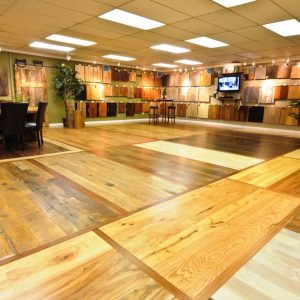The retail world always seems to be in a state of transition. Multinational mass merchandisers and single proprietors are constantly in flux, looking for attractive designs to draw customers in. However, while it may not be something that comes to mind when renovating a retail store, the flooring investment shouldn’t be overlooked.
Researchers at the University of Minnesota’s Carlson School of Management, including Joan Meyers-Levy, who is best known as the author of the Infamous Ceiling Height Study, have discovered that the ground beneath people’s feet can impact their perception of a product.
This research is an eye-opener for all brick-and-mortar and retail shop owners. Flooring is more than a question of utility or aesthetics in interior design; this perception may influence whether or not the customer will purchase the product. As research suggests, when individuals are standing on carpet, they are more likely to assess things near them as less comfortable.
Hardwood Floors for Retail Environment
Given the high volume of foot traffic and the fact that everyone is wearing shoes, a retail environment may not seem to be an ideal location for cheap flooring. Besides being visually attractive and consistent with the brand, a space should be able to handle the usage of shopping carts, strollers, dollies, and wheelchairs — and this is where wood floors comes. The right wood can easily withstand the rigors of a retail setting.
The Final Cut
Wood floors have always been a popular choice that adds sophistication and luxury to the shopping experience. Wood is durable, dependable, and cost-effective — and with the proper installation and maintenance, it can even last for hundreds of years. With the market being flooded with hardwood look-alikes, it’s important to research choosing real wood flooring that best fits your retail space’s requirements? Before making a decision, turn to experts for consultation on new floors.


